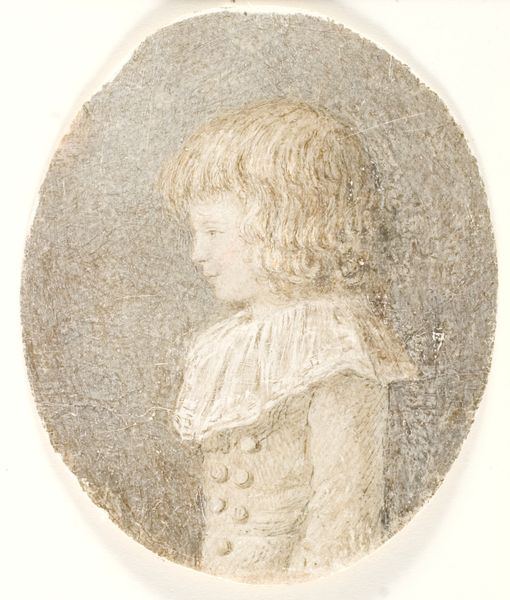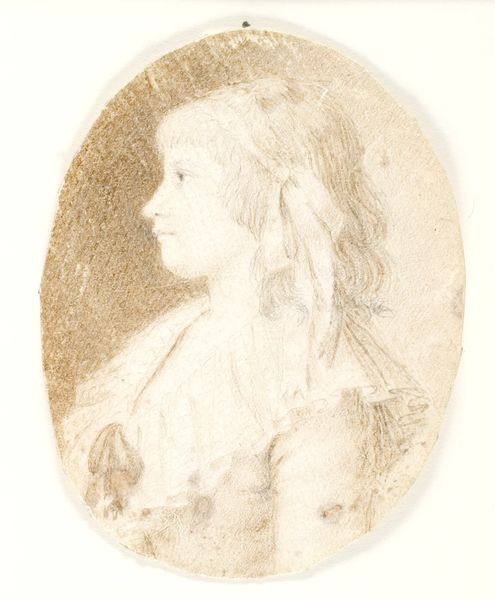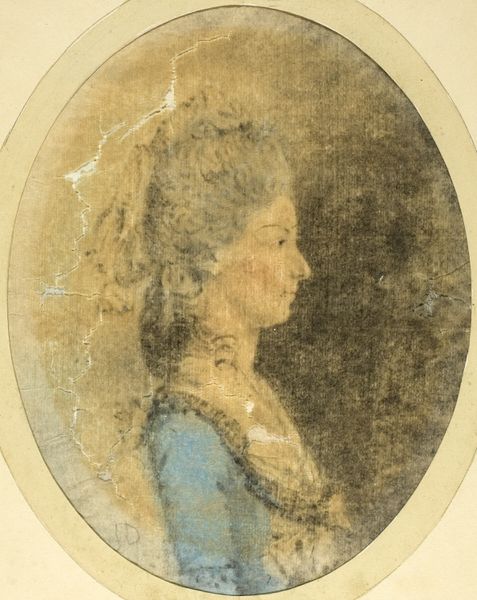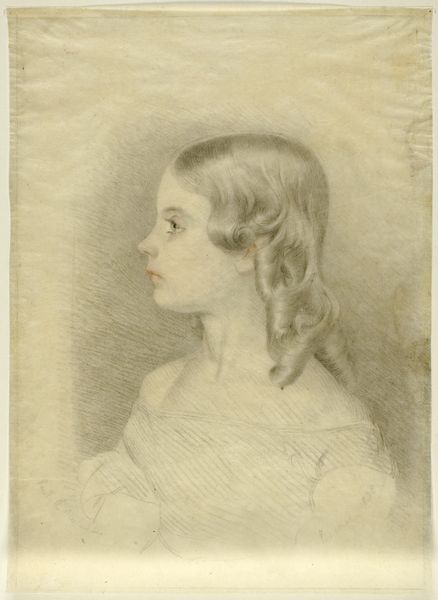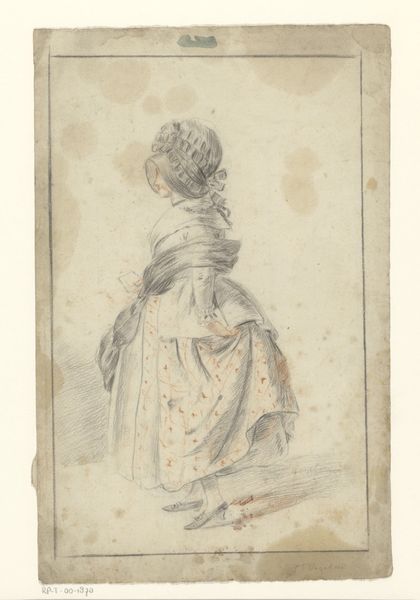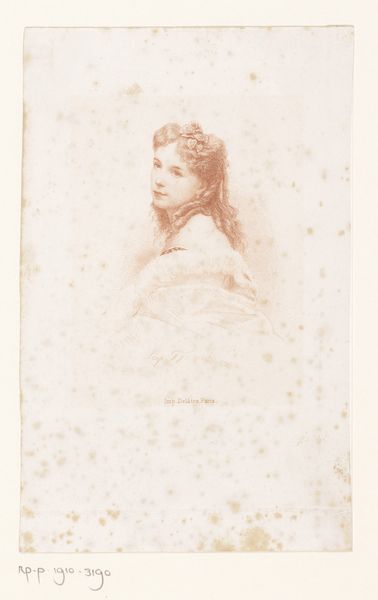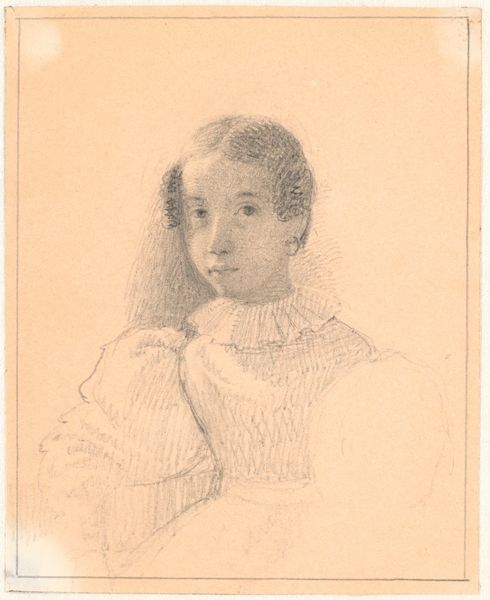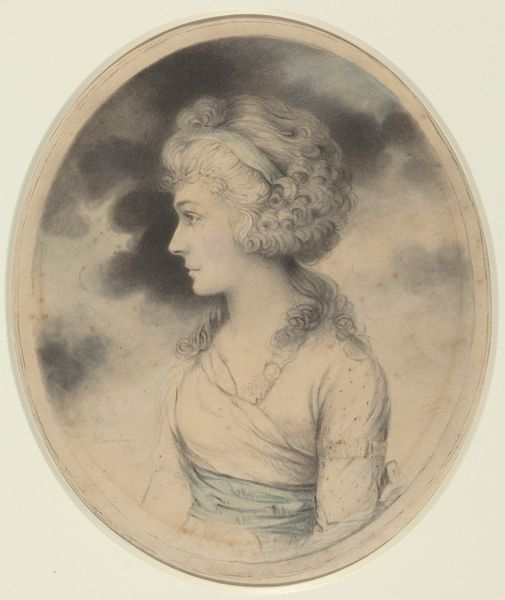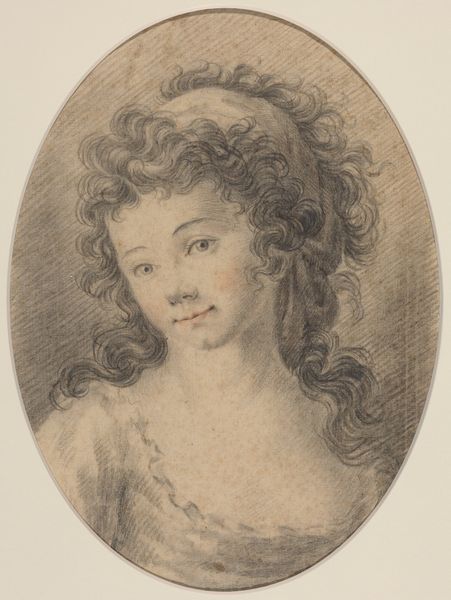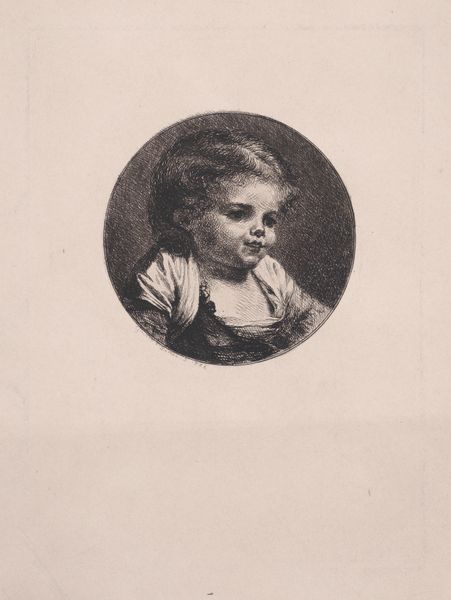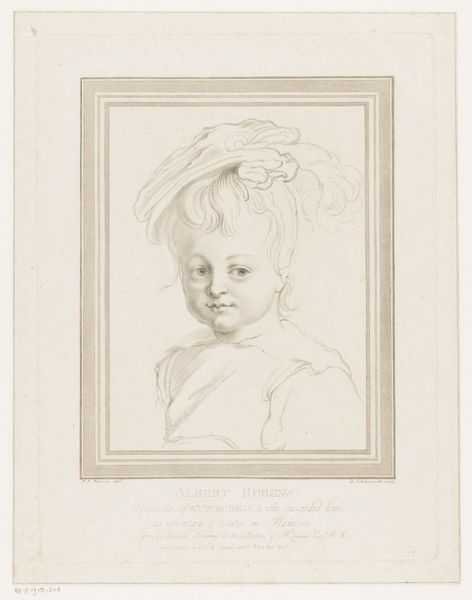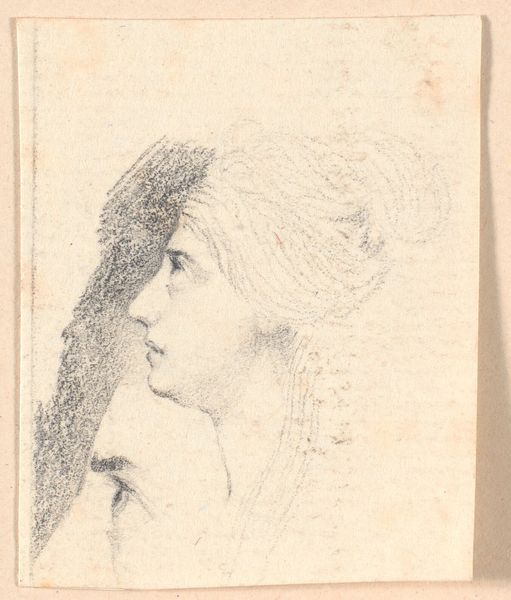
drawing, paper, charcoal
#
portrait
#
drawing
#
self-portrait
#
charcoal drawing
#
paper
#
romanticism
#
genre-painting
#
charcoal
Dimensions: 142 mm (height) x 111 mm (width) (bladmaal)
Editor: This is J.F. Clemens' "Barneportræt. Profil til højre", a charcoal drawing on paper made sometime between 1748 and 1831. It's a delicate, almost wistful, portrait of a child. What do you see in this piece, particularly regarding how it resonates with its time? Curator: The oval format itself harkens back to earlier portrait traditions, evoking cameos or miniature portraits often associated with nobility or the burgeoning middle class. Note how the child's gaze is directed outwards, yet not directly at us. This sideways glance carries significant weight, doesn't it? It creates an intriguing dynamic, suggesting both vulnerability and a sense of private contemplation. This aligns perfectly with Romanticism's fascination with interiority and the individual's emotional experience. Editor: I hadn’t considered the emotional context of the gaze itself. Curator: Also, observe the choice of charcoal. Its soft, almost dreamlike quality perfectly encapsulates the Romantic idealization of childhood. Consider how different a statement this would be if rendered in sharp, academic lines! This ambiguity softens any definitive reading of the subject. The child could represent innocence, potential, or even fleeting beauty. Clemens gives us not just a face, but an idea. Editor: It really emphasizes how the meaning of an artwork can change so much, depending on materials, symbols, and how it all fits together with what was happening back then. Curator: Indeed. Each element contributes to the broader cultural narrative. Analyzing how the artist uses visual language is like deciphering cultural memory itself. I’ve really enjoyed thinking about it this way today!
Comments
No comments
Be the first to comment and join the conversation on the ultimate creative platform.
